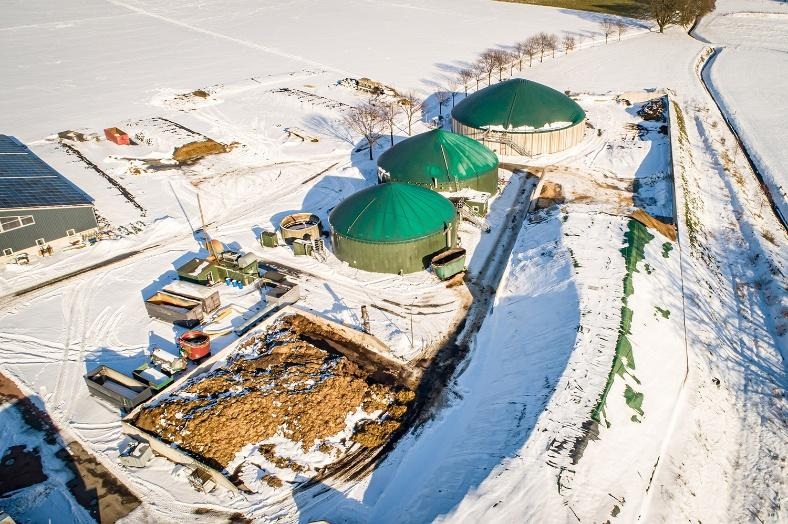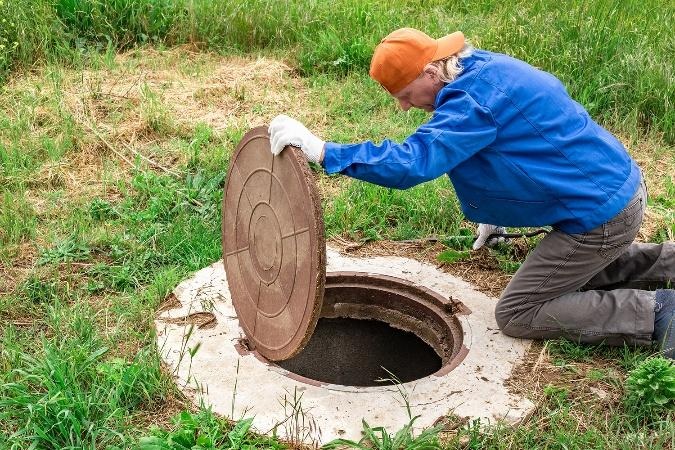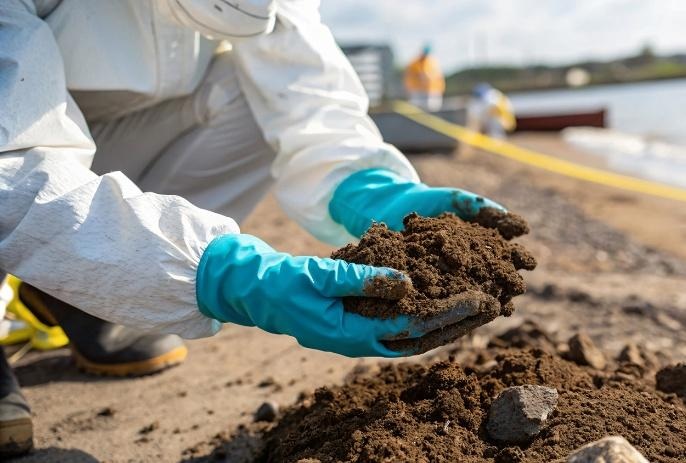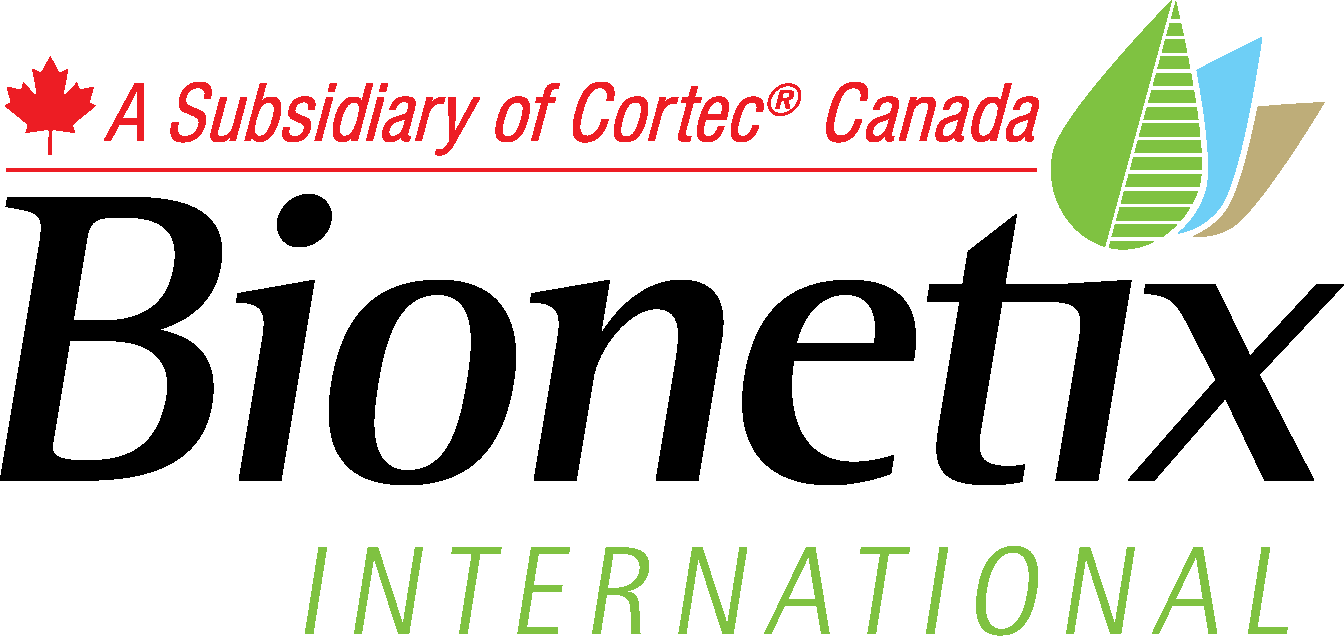PRESS RELEASE: Attention Formulators: Get Ready to Unleash Nature’s Microscopic Cleanup Crew!
PRESS RELEASE: Bionetix® International Taps Diana Di Marco for Leadership Amid Rapid Growth
PRESS RELEASE: Cortec® Names Caleb Pheneger as President, Opening New Chapter of Excellence

Cortec® CEO, Chairman, and Founder Boris Miksic recently announced his selection of Caleb Pheneger, COO, as the new President of Cortec® Corporation. This represents a strategic expansion of Pheneger’s responsibilities as Chief Operating Officer over Cortec’s US and Canadian operations to now include full oversight of Cortec® Corporation under the direction of Miksic. Given Pheneger’s stellar performance and multiple promotions over the last 13 years, this appointment promises to open a new chapter of excellence for Cortec®, Bionetix®, and their customers.
Miksic started Cortec® in 1977 after immigrating to the US and continues leading with a forward-thinking spirit. Looking ahead to the company’s future, he noted that this promotion “signifies the generational change in our organization. After having been at the helm for 48 years, since [Cortec’s] inception in 1977, I felt that the time has come to give a chance to younger managers to take over and bring our Group to the next level.”
The move also encapsulates Miksic’s vision for internal promotion, growth, and innovation. Pheneger joined Cortec® straight out of Michigan Technological University in 2012. He was hired as a contract-to-hire chemical engineer by the R&D arm of the company. During his first two years he provided technical service support, completed projects, and performed testing for Cortec Laboratories®, Inc. He quickly rose to the position of Production Manager in 2014 and Director of Manufacturing in 2017. In 2022, Miksic created the role of Chief Operating Officer with Pheneger in mind, putting him in charge of operations at Cortec® and Bionetix®.
Referring to Pheneger’s new role as president, Miksic stated, “I’m excited with Caleb’s latest promotion . . . continuing on the path of ‘excellence and quality’ that is . . . engraved in Cortec’s logo, in all aspects of Cortec’s business model, new technologies, world class plants and laboratories, excellence in sales and marketing.”
Miksic will continue his role as CEO and Chairman, giving him the opportunity to coach Pheneger and his team while expanding market share for holdings in his homeland of Croatia. “As always I will be making investments in our people, processes, new plants, R&D and add . . . acquisitions as necessary to provide for future expansion with a goal towards having successful employees and happy customers globally,” he announced.
Please join Cortec® in congratulating Pheneger on his new role as we start an exciting new chapter of Cortec® history marked by increasing excellence and quality in corrosion control and biotechnology!
To learn more about Cortec® Corporation and its corrosion solutions, please visit: https://www.cortecvci.com/.
Keywords: Cortec, Cortec president, Caleb Pheneger, corrosion industry news, corrosion control, personnel changes, business news, Bionetix, Boris Miksic, Cortec history
Need a High-Resolution Photo? Please Visit: www.cortecadvertising.com
For a PDF version please click here.
PRESS RELEASE: Turn Up the Heat Next Winter with Better Biogas Production!
Wastewater treatment plants (WWTPs), farms, and food processing facilities have the incredible opportunity of transforming waste materials into heat and energy through onsite biogas production. Many already take advantage of anaerobic digestion to convert manure, wastewater, and plant-based waste into methane used to heat and power their own facilities. Yet this local form of renewable energy comes with inherent efficiency challenges—challenges that can be effectively addressed through bioaugmentation and biostimulation. Bionetix® International encourages biogas facilities to explore those options now so they can be ready for maximum heating efficiency when winter prompts them to turn up the thermostat.

Enhance Performance with Microbes and Nutrients
Sometimes all that biogas generators need to fix these problems is to call in microbial and nutritional reinforcements. Bioaugmentation is the addition of beneficial microbes, and biostimulation is the addition of select nutrients that promote healthy microbial activity. One anaerobic digestion supplement that fulfills both purposes is BCP12™. BCP12™ contains select microorganisms and nutrients that promote healthy hydrolysis, acidogenesis, and acetogenesis to boost conversion of carbohydrates, fats, and proteins into methane formers. Moreover, BCP12™ appears to work well even in the presence of inhibitors that are common in lignocellulosic biomass,* making it an excellent addition to anaerobic digesters at facilities that process waste from food, crops, or pulp and paper.
BCP12™ showed promising benefits when applied during a trial at a wastewater facility that used excess methane to fuel the boilers that heated their own buildings and digestion process. The facility noticed an increase in biogas production that could significantly offset their need for natural gas at a fraction of the normal cost, so it was recommended that BCP12™ be added daily to the digester during the heating season.
Another great addition to anaerobic digesters is BIOGAS BOOSTER 3™, a special blend of three micronutrients specially chosen to stimulate microbial activity. These micronutrients are stable and bioavailable, ensuring easy microbial uptake. Laboratory testing conducted by York University, Ontario, in 2020 showed an increase in biogas production in just one week when BIOGAS BOOSTER 3™ was used.* An increase like this in the field would mean that facilities could get more thermal energy and electricity, thereby increasing the energy recovery from digested substrates.
Turn Up the Heat Next Winter
If your facility needs to discard large amounts of wastewater, manure, or food scraps, don’t miss your opportunity to convert waste into valuable biogas and help cut your facility heating and energy bill next winter. Then, go one step farther to optimize efficiency with bioaugmentation and biostimulation so you don’t have to feel guilty next time you turn up the thermostat! Need additional help? Contact Bionetix® International for further assistance maximizing your biogas efficiency.
*York University NSERC Engage Project Report, “Novel Bacterial Blend to Enhance Biomethanation of Municipal Sewage Sludge,” 11 December 2020. Prepared by Prof. Brar’s Team: Dr. Bikash Tiwari, Rahul Saini, and Mona Chaali.
Keywords: biogas, how to cut winter heating costs, anaerobic digestion challenges, biogas challenges, bioaugmentation, manure handling tips, Bionetix, wastewater treatment plant heating options, renewable energy, what to do with pulp and paper waste
Need a High-Resolution Photo? Please Visit: www.cortecadvertising.com
For a PDF version please click here.
PRESS RELEASE: Tame Your Septic Tank Smells This Summer
Bad odors and excess sludge are two signs of potential septic tank problems. Summer heat only makes those odors worse, signaling that something must be done to foster a healthy microbiome in the tank. Before those smells ripen into full “bloom,” why not tackle the problem by giving your septic tank a healthy boost of beneficial bacteria? Bionetix® International explains why and how that can be an easy way to tame your septic tank smells this summer.

Why Does My Septic Tank Smell So Bad?
Bad smells in septic tanks often indicate that the microorganisms responsible for waste biodegradation are not functioning efficiently. Here are several possible reasons your microbiome may not be flourishing:
• A high influx of FOG (fats, oils, or greases) or other waste from heavy use (e.g., open houses or other summer gatherings) has left behind too much organic loading for the current microbial population to keep up with.
• Harsh cleaning chemicals or root killers have killed off a large share of the microbial population.
• Existing microbes without enough oxygen to carry out aerobic waste digestion have flipped the switch to anaerobic digestion, which creates strong septic odors from gases such as hydrogen sulfide.
How Can I Get My Septic Tank Microbiome Back on Track?
The best plan of action is to stop the problem before it starts by adding a regular maintenance dose of beneficial bacteria. At other times, a shock dose of microorganisms or an oxygen boost will be needed. Treatment scenarios may include the following:
• Flush an ECO-SEPT™ pouch down the toilet once a month. Each pouch contains 1.5 billion CFU per gram of beneficial bacteria selected for their ability to degrade common organic waste like grease, proteins, and starches, plus biological nutrients and stimulants to keep the microbial population thriving.
• Add FIZZY-TAB™ to the septic tank monthly if a higher dose of 5 billion CFU per gram is warranted (more CFUs mean more bacteria working faster to restore the system).
• Restore the microbial population with a shock dose of BIOBOOSTER 1T™ (a tablet containing one trillion beneficial bacteria) in worst case scenarios when the system has experienced extreme die-off (e.g., after chemical disruptions or system overloads).
• Add AEROBOOSTER-O2™ as a slow-release source of oxygen to help aerobic bacteria recover if the underlying cause of sluggish microbial activity and bad odors is a lack of oxygen (oxygen helps good bacteria work efficiently; low oxygen leads to slower, smellier breakdown)
In addition to reducing smells, better microbial action can also cut down on sludge and reduce pumping frequency and costs by accelerating the biodegradation of solid waste, reducing how much sludge stays in the tank.
Now Is the Time to Tame Bad Odors!
Bad odors coming from septic tanks are not something you have to live with. They are something that can and should be resolved. One important step toward doing so is making sure your septic tank has the microflora and oxygen it needs to carry out waste digestion processes efficiently. Be sure to contact Bionetix® International for help selecting the correct treatments and dosages that make sense to keep your septic system in top working order. Then regularly check odors, sludge level, or system flow to make sure the system is on track. Don’t wait for summer smells to get out of hand. Take time now to tame them with proper microbial maintenance.
Keywords: septic tank smells, septic tank maintenance, bad odors coming from septic tank, bioaugmentation, Bionetix, why does my septic tank smell so bad, septic tank problems, oxygen booster, how to reduce sludge pumping frequency, ECO-SEPT
Need a High-Resolution Photo? Please Visit: www.cortecadvertising.com
For a PDF version please click here.
PRESS RELEASE: Give Your Soil and Wastewater ‘Bugs’ the Nutritional Boost They Need
“Did you take your vitamins today?” Just like people need nutrients, so do the microbes in your wastewater and soil. Bionetix® International is here to help you make sure your “bugs” are well-nourished with MACRO N/P™.

Why Do Macronutrients Matter?
Beneficial bacteria need the right balance of nitrogen and phosphorus to support cell growth, metabolism, enzyme synthesis, and energy production, among other functions. Without these nutrients, microbial growth and activity are sluggish. Wastewater does not fully biodegrade. Contaminated soil stays contaminated. On the other hand, too much nitrogen can cause problems and slow down the cleanup process. That is why it is important to be able to recognize nutrient deficiency and stimulate microbial activity with the right proportion of nitrogen and phosphorus when needed.
Signs of Nutrient Deficiency
Nutrient deficiency is very common in petroleum contaminated soil, which requires an optimal level of 136 mg/kg of nitrogen to support bioremediation. In wastewater, nutrient deficiency most commonly appears in industrial sewage (rather than municipal waste), affected by low-nutrient effluents such as those from paper mills or palm oil mills, or fluctuations in the use of cleaning chemicals. Such nitrogen/phosphorus deficiencies can manifest themselves in excess sludge, poor flocculation, and slimy gray foam. Manure lagoons and compost piles that have dried out over time also tend to be deficient in the macronutrients nitrogen and phosphorus.
Solving Nutrient Deficiency with MACRO N/P™
Once identified, these problems are relatively easy to solve with nutritional supplements like MACRO N/P™. MACRO N/P™ offers a nitrogen-phosphorus ratio of 5:1, which is typically the ideal balance to stimulate healthy microbial growth. David S. Llano (Inside Sales Rep & Product Support at Bionetix® International), explained why this is the case: “Microbes need more nitrogen than phosphorus for making enzymes, proteins, and nucleic acids, but both are essential. A ~5:1 N:P ratio maximizes microbial activity without leaving excess nutrients that could cause environmental harm.”
If you think your soil, wastewater, manure, or compost piles need some biostimulation this year, contact your Bionetix® representative today to check nutrient levels and get expert dosing recommendations!
Keywords: wastewater problems, nutrient deficiency, contaminated soil, soil bioremediation, biostimulation, bioaugmentation, poor flocculation, how much nitrogen do I need for soil bioremediation, Bionetix, industrial wastewater problems
Need a High-Resolution Photo? Please Visit: www.cortecadvertising.com
For a PDF version please click here.
PRESS RELEASE: Cortec® 2025 Corporate Brochure Update Offers Fresh New Look at Corrosion Control
PRESS RELEASE: Transforming the Textile Industry with Sustainable Biological Solutions
The textile industry often struggles with a negative environmental image from the large quantities of dyes and other chemicals used to make fabric and leather. In addition to worker hazards, these chemicals present challenges for wastewater treatment. Fortunately, many biological solutions in the form of enzymes and probiotics are now available to make various aspects of the textile industry friendlier to workers and the environment.

The Expertise of Enzymes
Commercial enzymes such as those sourced from microorganisms are a great boon to textile processors because of their inherent benefits and/or potential to replace harsh chemicals. For example, enzymes available from Bionetix® International offer the following possibilities:
- ECL1000™ is a liquid amylase concentrate that can be used to remove starch during desizing of fabric.
- ECP1611™ is a powder enzyme concentrate containing protease with keratinase activity. This combination is ideal for removing hair in leather processing. It can also help with wool finishing for a smoother texter.
- ECL1200™ is a liquid lipase concentrate that can be used to degrease leather and bio-scour wool, replacing harsh and/or polluting chemicals normally used for these operations. It can also be used to pretreat wool for improved dyeing.
- ECL3000™ is a liquid cellulase concentrate that can be used for bio-polishing of plant-based fabrics, removing extraneous fibers for a smoother finish. Bio-stoning is another use, cutting down on the number of pumice stones needed to fade denim.
The Power of Probiotics
Although enzymes can replace some of the harsh chemicals that might otherwise end up in wastewater, textile effluent still has plenty of concentrated waste materials that need to be treated before the remaining water can be safely released to the environment. That is where bioaugmentation with probiotics (i.e., beneficial bacteria) takes over. Bioaugmentation introduces microbial reinforcements to any naturally-occurring colonies already present in wastewater material during the biological treatment stage at the wastewater treatment plant. Supplementary microbes should be chosen based on their ability to speed up the biodegradation of specific substances. In textile wastewater, these pollutants may include starches, surfactants, hydrocarbons, greases, ammonia, and nitrogen, reflected in characteristics such as high overall COD (chemical oxygen demand), BOD (biochemical oxygen demand), TSS (total suspended solids), and TKN (total Kjeldahl nitrogen) that increase wastewater surcharges. A variety of nutrient blends that target specific substances and help improve key wastewater quality markers like these are also available from Bionetix®:
- BCP10™ contains microorganisms that degrade complex organic chemicals such as phenols and surfactants, thus enhancing overall BOD/COD removal.
- BCP11™ improves effluent quality in industries with high chemical content such as solvents.
- BCP22™ is designed for wastewater with high concentrations of greases. Although often associated with the food industry, BCP22™ can also be used to degrade excess FOG (fats, oils, greases) produced by leather degreasing.
- BCP35M™ degrades hydrocarbons and other organic waste
- BCP55™ targets the degradation of starch, present in textile wastewater as a residual of the desizing process.
- BCP655™ consumes organic and inorganic nitrogen, reducing ammonia levels and eliminating expensive surcharges for high TKN discharge levels.
Specific treatment will vary from site to site, but when working with a technical consultant, textile facilities can stay one step ahead of high surcharges from excess contaminant levels in wastewater effluent. Incorporating enzymes into the manufacturing process and adding the right “bugs” to wastewater are two sustainable solutions for the textile industry to take advantage of for practical as well as ecological reasons. Contact Bionetix® to get more advice on
transforming your textile operations for a greener, more sustainable future.
Keywords: textile industry, sustainability, bioaugmentation, textile wastewater treatment, enzymes for manufacturing, cellulase suppliers, lipase suppliers, amylase suppliers, protease suppliers, Bionetix
Need a High-Resolution Photo? Please Visit: www.cortecadvertising.com
For a PDF version please click here.
PRESS RELEASE: Four Nature-Based Ways to Create the Lawn of Your Dreams
Meteorological summer is more than half over in the Southern Hemisphere. Spring is on its way in the north. Whatever hemisphere you find yourself in, now is a great time to think about pursuing your dreams for a greener lawn. While you could opt for a quick dose of synthetic fertilizer for fast results, Bionetix® International recommends four nature-based treatments to enhance the overall health of the soil for long-term benefits.

1. Enrich the Soil with Organic-Based Fertilizer
Making sure you have a rich blend of nutrients is a good place to start. While many synthetic fertilizers major on the “big three”—NPK (nitrogen, phosphorus, and potassium)—ORGANIC PLUS™ draws on NPK from natural sources and adds calcium, magnesium, sulfur, iron, boron, and manganese to the picture. It also contains humic acids to further enrich the soil and improve nutrient absorption. A natural wetting agent supports more efficient use of water to reduce drought stress. Application is especially beneficial for new growth in early spring but can continue weekly as the grass matures.
2. Improve Soil Structure and Biology
Often, organic fertilizers need the help of microorganisms to make nutrients available to grass roots. A biofertilizer such as ECO-TURF™ is perfect for this purpose. In addition to various minerals, vitamins, and plant extracts, ECOTURF™ contains 75 million CFU (colony forming units) of beneficial bacteria per mL. These microorganisms help break down organic matter, creating a nutrient rich soil structure that can support vigorous leaf, stem, and root growth. ECO TURF™ may be applied by sprayer or irrigation system every two to four weeks.
3. Thin Out the Thatch
The longer summer goes and the grass continues to grow, the more thatch and dead organic materials build up in the lawn. Since this makes it harder for water and oxygen to reach the grass’s roots, mechanical dethatching is often recommended. However, ECO-D-THATCH™ serves as an excellent supplement to or replacement for mechanical dethatching. This biotreatment uses beneficial bacteria and enzymes to break down thatch and organic debris, creating more nutrient rich humus while giving oxygen and water better access to soil and roots. ECO-D-THATCH™ should be applied every two to four weeks.
4. Activate Plant Growth
SOIL-BAC™ Premium can take your lawn another step further in healthy growth and nutrient breakdown. PGPR (plant growth promoting rhizobacteria) serves as a natural plant growth hormone while mycorrhizae help increase active biomass. Another special feature is the use of both symbiotic and free-living bacteria to help fixate atmospheric nitrogen. These components increase nutrient availability and facilitate absorption—even before vegetation begins to grow in the spring.
Follow Your Dreams to a Healthy Lawn!
There are many great strategies to grow a healthy lawn. While you could take the fast route of synthetic fertilizers that leave behind unwanted runoff and contamination, a better approach is to focus on creating healthy soil with natural drought resistance and growth promoters, beneficial microorganisms, and a wide range of nutrients. It’s not too late to finish the lawncare season strong in the Southern Hemisphere—or too early to dream of lush green turf in the Northern Hemisphere. Contact Bionetix®to get started harnessing the power of nature to create the lawn of your dreams!
Keywords: create the lawn of your dreams, natural lawncare, organic fertilizer, pros and cons of synthetic fertilizer, Bionetix, dethatching tips, healthy lawns, biofertilizer, drought resistant lawns, tips for better lawns
Need a High-Resolution Photo? Please Visit: www.cortecadvertising.com
For a PDF version please click here.
